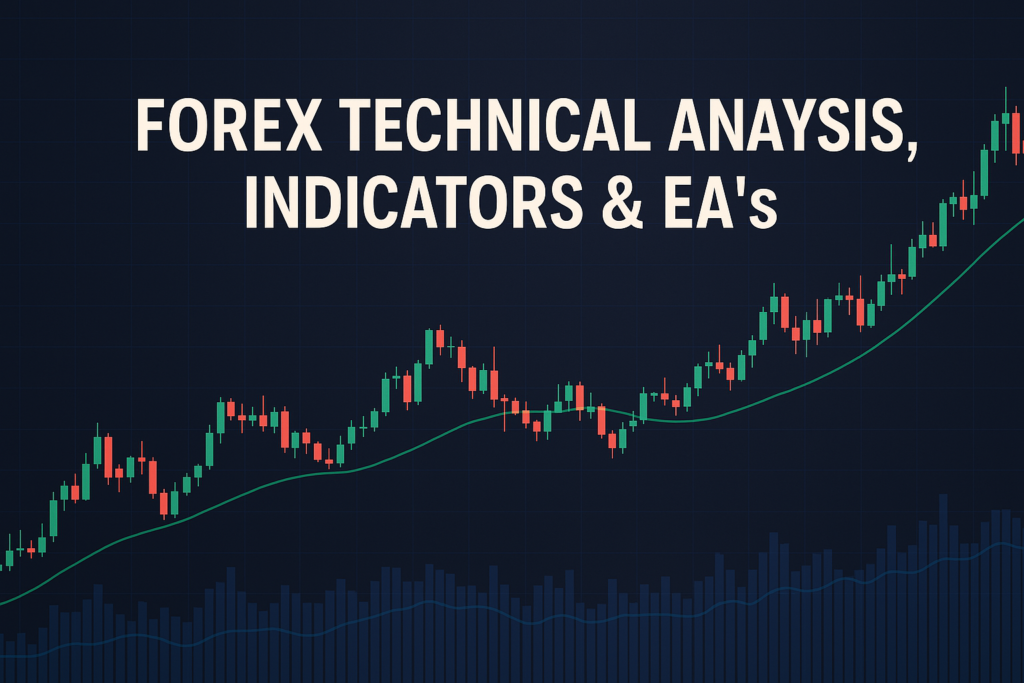
The ATR and stop loss are essential tools for Forex traders, helping manage risks and enhance trading strategies.
The world of Forex trading can feel like a roller coaster ride. With prices moving up and down, traders often find themselves searching for ways to manage their risks effectively. This is where the concepts of ATR (Average True Range) and stop loss come into play. ATR helps traders understand market volatility, while stop loss orders protect them from significant losses.
However, many traders, whether beginners or professionals, struggle to grasp these concepts fully. They may place stop loss orders without understanding their optimal placement or fail to use ATR to its full potential. This lack of understanding can lead to missed opportunities or, worse, unnecessary losses. Therefore, mastering ATR and stop loss is crucial for anyone looking to succeed in Forex trading.
This article will guide you through the essentials of ATR and stop loss, their historical background, advantages and disadvantages, practical applications on trading platforms like MT4 and MT5, and various trading strategies. By the end, you’ll feel more confident in utilizing these tools effectively.
Sometimes, traders encounter situations where their Trailing Stop Not Working due to various reasons. Understanding how to resolve this issue can help you manage your trades better.
What is ATR and Stop Loss?
At its core, the Average True Range (ATR) is a tool that measures market volatility. Think of it as a way to determine how much a currency pair moves, on average, over a specific time. A higher ATR indicates a more volatile market, while a lower ATR suggests a calmer one.
A stop loss, on the other hand, is an order you set to limit your losses on a trade. If the price of your currency pair drops to a certain level, your stop loss order will automatically sell the asset to prevent further losses. Imagine you’re riding a bike downhill. If you start to lose control, you need to hit the brakes to avoid crashing. That’s what a stop loss does for your trading account.
Types of ATR and Stop Loss
There are various types of ATR calculations, including simple, exponential, and weighted. Each type has its unique formula and purpose. For instance, the simple ATR is the most commonly used, providing a straightforward average of price movements over a specified period.
How ATR and Stop Loss Smooth Out Price Action
ATR helps traders understand price action better by showing how much a currency pair typically moves. By incorporating ATR into your stop loss placement, you can set more informed and realistic loss limits. For example, if the ATR is high, you might decide to place your stop loss further away to give the trade more room to breathe.
Common Periods Used and Why
Traders often use ATR periods of 14, 20, or even 30 days. The choice of period depends on the trading style and strategy. Shorter periods might be useful for day traders, while longer periods can help swing traders capture broader price movements. Understanding these periods can significantly improve your trading decisions.
The History of ATR and Stop Loss: How It Became Popular
Origin of ATR and Stop Loss
The ATR was developed by market technician J. Welles Wilder Jr. in the late 1970s. He created it to help traders gauge market volatility and make better trading decisions. The concept of stop loss orders has been around for a long time, evolving as traders sought ways to protect their investments.
When Did Traders Start Using It Widely?
As technology improved and trading platforms became more accessible, ATR and stop loss orders gained popularity. Traders began to see the importance of managing risks effectively, leading to a surge in the use of these tools in the Forex market.
Real-Life Stories
Many professional traders have credited their success to the effective use of ATR and stop loss. For instance, one trader managed to turn a $1,000 investment into $10,000 by understanding market volatility and employing strategic stop loss orders. Such stories inspire new traders to learn and apply these concepts in their own trading journeys.
Advantages and Disadvantages of ATR and Stop Loss
Advantages:
- Helps Identify Trends Easily: ATR provides clarity on market movements, making it easier for traders to spot trends.
- Useful for Dynamic Support and Resistance: Traders can use ATR to identify key levels where the price might bounce or break.
- Works Well for Crossover Strategies: ATR can enhance strategies that rely on moving averages by confirming volatility.
Disadvantages:
- Lags Behind Price Movements: Because ATR is based on past price action, it may not react quickly to sudden market changes.
- Can Give False Signals in Sideways Markets: In choppy price conditions, ATR may lead to misleading signals, confusing traders.
How to Apply ATR and Stop Loss on MT4 & MT5
Step-by-Step Guide to Adding ATR and Stop Loss on Charts
To add ATR on your MT4 or MT5 platform, follow these steps:
- Open your trading platform and select the chart you want to analyze.
- Click on “Insert,” then “Indicators,” followed by “Trend.” Select “Average True Range.”
- Adjust the settings as needed and click “OK.”
Customizing ATR and Stop Loss Settings
You can customize ATR settings by changing the period and colors to suit your preferences. For stop loss, you can set it based on the ATR value, ensuring it aligns with your risk management strategy.
Saving Templates for Easy Application
Once you’ve customized your settings, save your chart as a template. This way, you can apply the same ATR and stop loss settings to other charts with just a few clicks.
5 to 7 Trading Strategies Using Only ATR and Stop Loss
All-Time Frame Strategy (M5 to D1)
This strategy involves using ATR to set stop loss levels based on volatility across different time frames. For example, if the ATR is high on the M5 chart, you might set a wider stop loss on a D1 trade.
Trending Strategies
In trending markets, utilize ATR to identify breakout points. If the price moves beyond a certain ATR level, consider entering a trade and setting your stop loss accordingly.
Counter Trade Strategies
Counter-trading involves going against prevailing trends. Use ATR to gauge when the price might reverse, and set tight stop losses to manage risks.
Swing Trade Strategies
For swing trading, look for price swings using ATR to set stop loss levels. This approach helps you capture shorter-term movements while protecting your capital.
5 to 7 Trading Strategies Combining ATR and Stop Loss with Other Indicators
All-Time Frame Strategy (M5 to D1)
In this strategy, combine ATR with moving averages. If the price crosses above the moving average with a strong ATR signal, enter a trade and set your stop loss based on the ATR value.
Trending Strategies
Combine ATR with RSI (Relative Strength Index) to confirm entries. If ATR indicates volatility and RSI shows overbought or oversold conditions, execute your trade with a calculated stop loss.
Counter Trade Strategies
Use ATR in conjunction with Bollinger Bands. When the price touches the upper or lower band, check the ATR for confirmation before entering a counter-trade, then set a stop loss accordingly.
Swing Trade Strategies
In swing trading, pair ATR with MACD (Moving Average Convergence Divergence). When the MACD signal line crosses above the zero line and ATR shows volatility, it’s a good time to enter a position with a defined stop loss.
Sometimes, traders face issues where their Timeframe Buttons Not Responding. Knowing how to troubleshoot this can help keep your trading smooth and efficient.
Top 10 FAQs About ATR and Stop Loss
1. What is ATR?
ATR stands for Average True Range. It measures market volatility, helping traders understand how much a currency pair typically moves.
2. How do I set a stop loss?
A stop loss is set by determining a price level at which you want to exit a losing trade. This level can be based on ATR, recent highs/lows, or support/resistance levels.
3. Can ATR help with day trading?
Yes! ATR is especially useful for day traders as it provides insights into intraday volatility, allowing for better risk management.
4. How often should I recalculate ATR?
It’s advisable to recalculate ATR regularly, especially when market conditions change. Most traders use daily or weekly recalculations.
5. What are the common ATR settings?
Common ATR settings include periods of 14, 20, or 30 days, depending on your trading style.
6. Can I use ATR for all currency pairs?
Yes, ATR can be applied to any currency pair or asset. However, the volatility may vary, so it’s important to adjust your settings accordingly.
7. What is the best time frame for ATR?
The best time frame for ATR depends on your trading style. Shorter time frames are great for day traders, while longer time frames suit swing traders.
8. Does ATR work in sideways markets?
ATR can provide signals in sideways markets, but it may give false signals. It’s essential to confirm with additional indicators.
9. How can I combine ATR with other indicators?
You can combine ATR with moving averages, RSI, or Bollinger Bands to enhance trading strategies and validate entry/exit points.
10. What is the best way to backtest ATR strategies?
Backtesting ATR strategies involves using historical data to simulate trades based on your strategy. Most trading platforms offer backtesting features.
Conclusion
In summary, understanding ATR and stop loss is vital for any Forex trader. These tools can help you manage risks, identify trends, and enhance your trading strategies. The insights shared in this article empower you to use ATR and stop loss effectively, ensuring you stay protected while trading.
Before diving into real-money trades, take the time to test your strategies. Practice makes perfect, and the more you familiarize yourself with ATR and stop loss, the better your chances of trading success.
Stay ahead of the game by reading expert-backed advice on this topic MarketWatch, EToro Academy
Expand Your Knowledge
- 📌 Forex Trading Learning Road Map
- 📌 Forex Trading Course with no Fees
- 📌 Forex Trading Issues, Problems, and Solutions
- 📌 Forex Daily Forecast & Live Updates
- 📌 Forex Fundamental & News Analysis: Tomorrow’s Market Movers & Trade Opportunities
- 📌 Forex Education Hub: Learn & Profit
- 📌 Forex Technical Analysis, Indicators & EA’s
Start Trading Today
Ready to take your forex trading to the next level? Open an account with Exness, one of the most trusted platforms in the industry. 👉 Sign Up Now and trade with confidence!
My recommended broker stands out with ultra-low spreads for beginners, instant withdrawals, and zero spread accounts for pro traders.
Trusted since 2008, lightning-fast execution, no hidden fees, and a secure, transparent trading environment—giving you the edge you need to succeed. 🚀
YouTube Video Library: Related Videos
Note: The video above is embedded from YouTube and is the property of its original creator. We do not own or take responsibility for the content or opinions expressed in the video.



